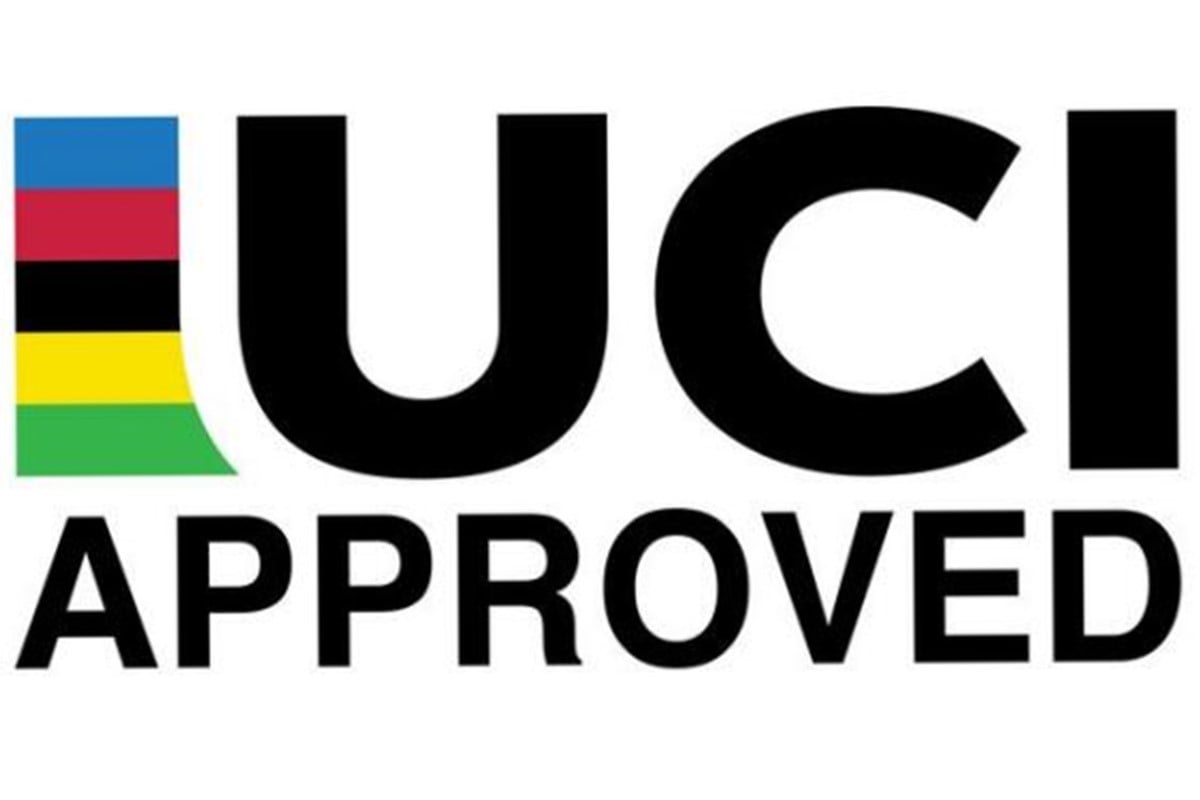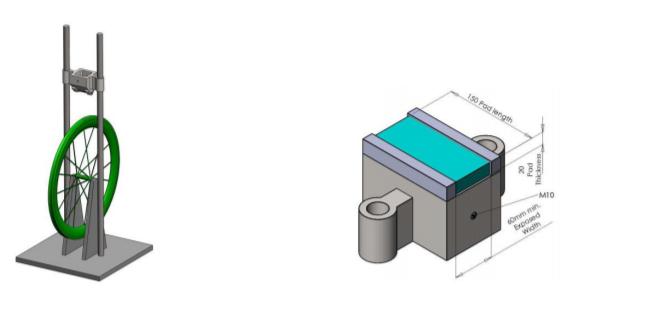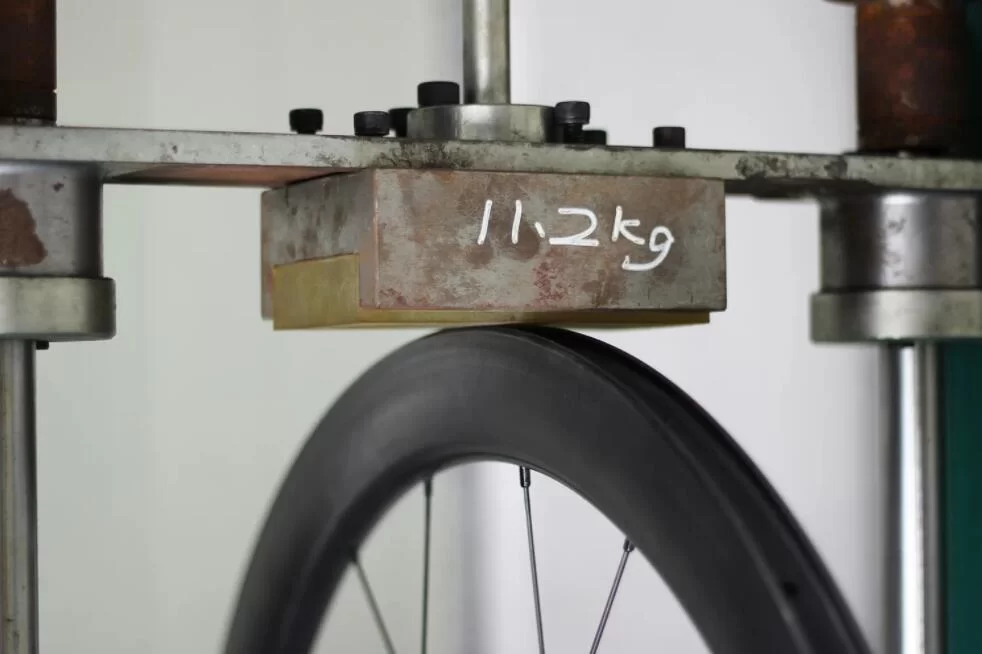Our Drive carbon spoke road wheels all feature the UCI approved stamp, but what is the UCI, and what is the meaning of UCI approved. In this article, you will learn what the UCI is, what it takes to get approval, and why it matters. Let’s first take a look at what the UCI is

About The UCI
The Union Cycliste Internationale (UCI) stands as the paramount global authority overseeing the diverse realm of cycle sports, orchestrating its operations from its headquarters nestled in Aigle, Switzerland. Since its establishment on June 14th, 1900, the UCI is heavily involved in the sport of cycling.
The primary thing that the UCI is responsible for is overseeing international competitive cycling events. They organize the World Championships, the UCI World Tour, ProSeries, and Continental Circuits among many other races. In addition, they also issue racing licenses and disciplinary rules. The UCI manages racing classification and points systems in road, track, MTB, and BMX cycling for both men and women at amateur and professional levels.
The UCI also plays a major role in the gear that riders are allowed to use in cycling races. One of the most important rules in terms of safety was requiring riders to wear helmets to wear helmets at all times. Wheels and frames used in competition also have to follow specific rules and standards restricting what riders can use in order to create more uniformity and improve safety.
The following is information about UCI bike and wheel regulations.

Rules About Bike Aerodynamics
Certainly, the UCI, being the governing body for cycling, extends its regulatory reach to aerodynamics, introducing rules that shape the design of race bikes. In the past, one of the most well-known regulations was the 3:1 ratio, restricting the length to width proportion of frame tubes. However, this rule has since been discontinued.
Interestingly, despite the change in this specific ratio rule, the overall landscape of aero bikes has seen only subtle transformations. This is because of another requirement – the frame tubes must fit within an 8cm “box.” This constraint limits the incorporation of features like fairings or modifications to the front triangle, preventing the frame from taking on a sail shape.
In response to these constraints, innovative approaches have emerged, leading to a shift in design strategies. Many brands have started to focus on integration in order to improve aerodynamics. Integration involves a holistic approach to design, focusing on optimizing various components to work seamlessly together. The result is a bike that doesn’t just adhere to the rules but actively contributes to reducing drag, ultimately saving watts and enhancing overall performance by making the bike more aerodynamically efficient.
This emphasis on integration represents a dynamic response to the ever-evolving intersection of regulatory requirements and cutting-edge design in the realm of competitive cycling.

About UCI Wheel Certification
To ensure a more standardized and innovation-friendly approach and , the UCI instituted the Equipment and New Technologies Commission, representing a departure in their philosophy to embrace advancements in technology.
The UCI Equipment and New Technologies Commission came about due to subjective interpretations of the UCI’s Lugano Charter by race commissaries. This variability in interpretation inevitably led to numerous disputes. In response, the UCI sought to streamline and provide clarity through the establishment of a UCI certified sticker.
Originally confined to being affixed to the bike, this certification has expanded to cover various components. The UCI certification for wheels serves as a rigorous examination to ensure their construction meets stringent safety standards, affirming that they are as secure as possible. This certification, in turn, grants approval for the wheels to be used in all UCI-sanctioned events. In essence, non-certified wheels are not allowed to be used in UCI certified events. This allows for standardization and safety.

UCI Wheel Testing
Each wheel sent for approval has to undergo a meticulous vertical drop test to ensure its structural integrity. This testing became standardized on January 1st, 2016. To make the process simpler, manufacturers can opt to do the wheel testing at their own facilities or at another, as long as specific guidelines are followed.
The test itself is called the Vertical Drop Test. In the test, a wheel is fixed. A force of 40 joules +/-5% from a flat steel anvil covered with a 20mm silicone rubber pad. The impact mass itself must weight impacts the rim without a tire installed. The impact location must be at a 90 degree angle from the valve hole, adjusted to be at a point between spokes.
For a wheel to receive certification, it must meet the following criteria:
- No visible cracks or delamination
- No changein lateral profile or lateral run out exceeding 1.0mm
- No changein radial profile or radial run out exceeding 1.0mm
This UCI certification not only streamlines the assessment process for race commissaires but also instills confidence in riders. Opting for UCI certification in our wheels is important not only because we are dedicated to producing quality products, but also to support the multiple UCI Continental pro cycling teams using our wheels on the world stage.

What about Elitewheels’ carbon fiber wheels?
As we said we wanted to make sure our carbon fiber wheel rims are leading the way, so we get them UCI certified. All of our Drive road wheels are UCI certified, meaning they can be used in all UCI sanctioned events
In additional to all of the UCI certified Drive road wheels, we also offer many other road, TT, gravel, and MTB wheelsets. While they do not have a UCI sticker, they can still be raced in non-UCI mass start road and cyclocross events. We conduct the same UCI testing on all of our wheels and certify the ones that are used for UCI mass start racing events by our sponsored pro teams and riders, namely the Drive series.
Time trials even in UCI events are classified as non-mass start events, meaning the certification is not necessary. Our Vevo TT wheelsets and the the Velo Six would fall under this category. Wheels used in UCI mass start events require at least 12 spokes.
You can be sure then if you buy any of our carbon fiber wheels that they have been tested. In addition to the UCI vertical impact test, we conduct over a dozen other tests on each wheel ensuring its longevity, strength, and performance. That is why we offer a 3-year warranty on all of our wheelsets. You can have peace of mind and know that you have bought a set of the highest quality wheels available.



